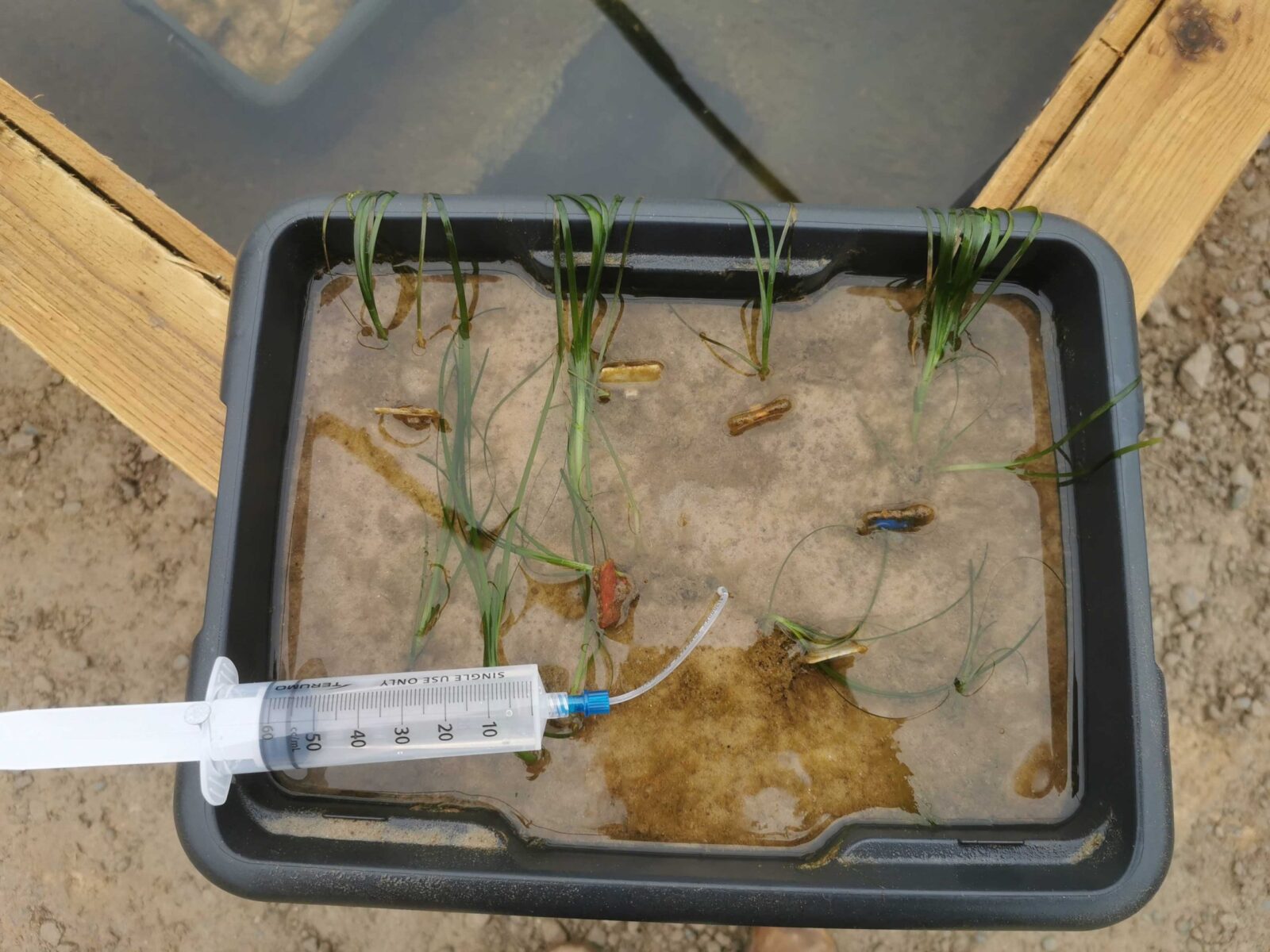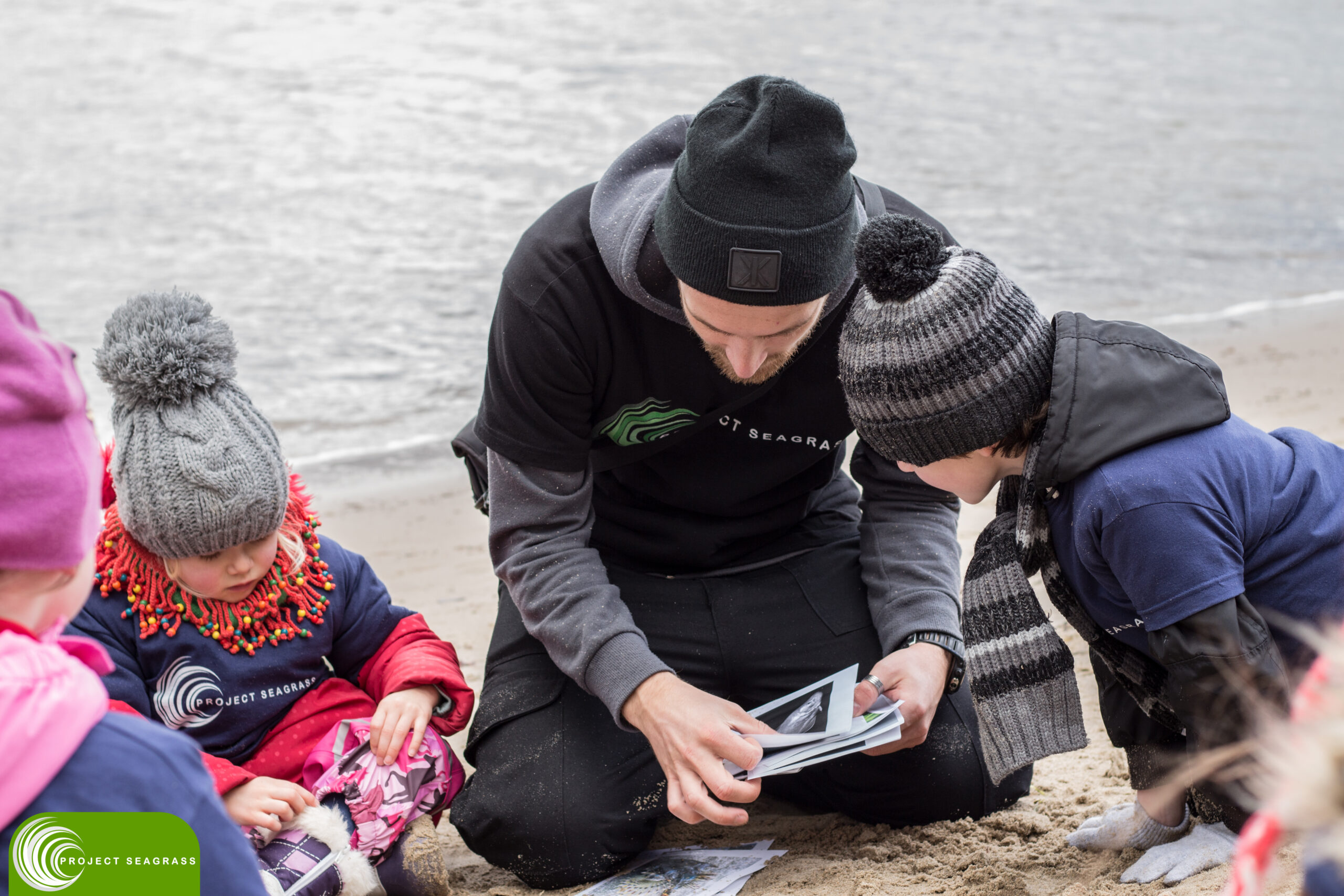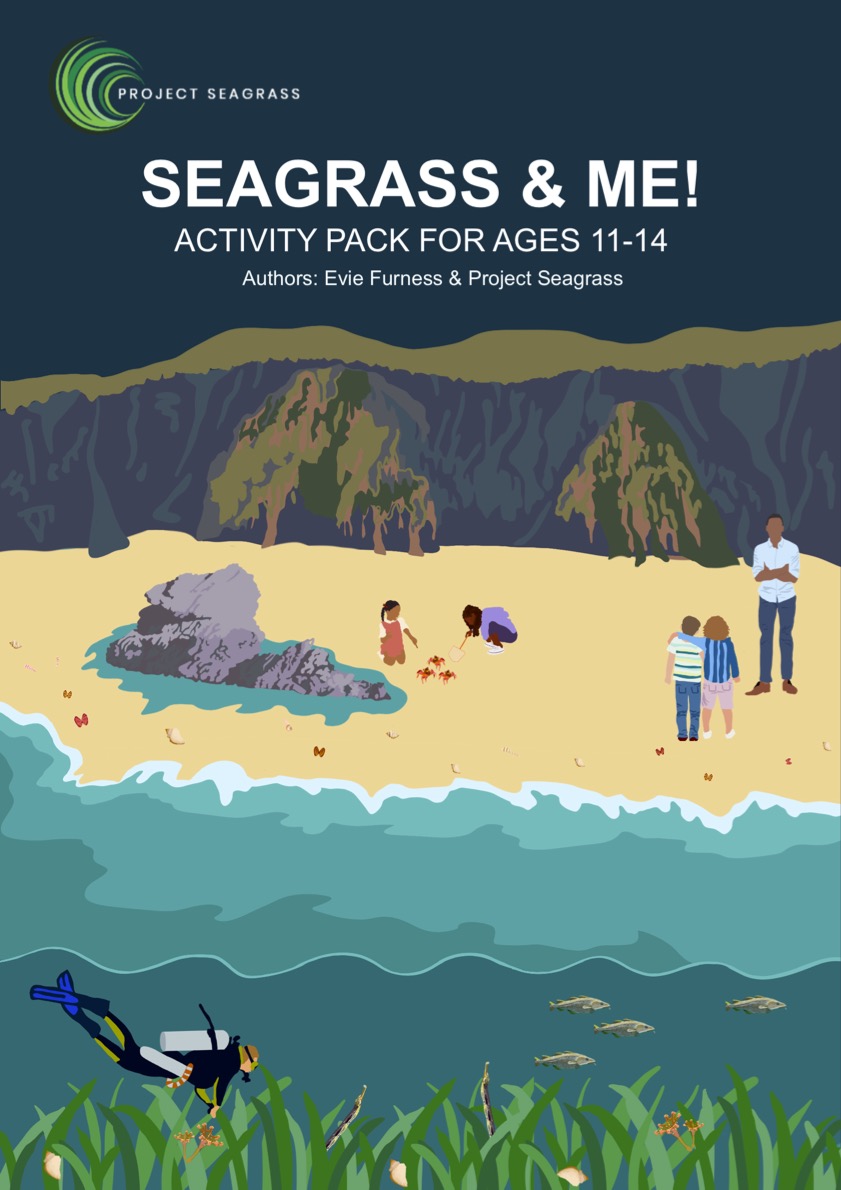WHAT WE DO
WHAT WE DO
THE CRISIS WE ARE FACING
Seagrass meadows are incredibly productive and biodiverse systems, they’re like a hidden wonder of our coastline, supporting our fisheries, protecting our coastlines, and help mitigating against the problems of climate change. But they are globally threatened and in the UK alone, we’ve lost up to 92% of our seagrass. The people of this planet need seagrass. Our planet needs seagrass. And in the face of a growing climate emergency and a biodiversity crisis, it is imperative we save our seagrass.

THE CRISIS WE ARE FACING
Seagrass meadows are incredibly productive and biodiverse systems, they’re like a hidden wonder of our coastline, supporting our fisheries, protecting our coastlines, and help mitigating against the problems of climate change. But they are globally threatened and in the UK alone, we’ve lost up to 92% of our seagrass. The people of this planet need seagrass. Our planet needs seagrass. And in the face of a growing climate emergency and a biodiversity crisis, it is imperative we save our seagrass.

HOW WE PROTECT SEAGRASS
RESTORATION


WHAT IT TAKES TO RESTORE SEAGRASS
Globally, we have lost approximately 1/3 of our seagrass meadows in the last century. We’re building a team of ‘underwater gardeners’ to replant our lost seagrass meadows.
In the UK, seagrass is seasonal which means it flowers in spring and produces seed in summer. At this time of year, our team of snorkelers, divers and waders are able to go out into healthy donor meadows to pick these mature seeds.
We transport these seeds back to our lab where they can be processed. This involves processing units that encourage excess seagrass material to rot away to leave behind our precious ‘seeds of hope’.
These seeds can then be stored at our nursery in very cold and very salty water to prevent germination until we are ready to plant them. We wait for a perfect tidal window coupled with appropriate weather in the autumn to go back out into our coastline to plant them at sites that we have assessed to be both ecologically suitable and supported by local communities.
The seeds are planted using a range of methods including hessian bags filled with sand and seeds planted just beneath the surface, Direct Injection Seeding (DIS) to directly inject a seed mixture into the sediment, transplanting healthy young seedlings from a donor meadow to a planting site, and more. We are constantly working to improve this process, trial new methodologies and work on mechanisation to scale up our restoration efforts.
Globally, we have lost approximately 1/3 of our seagrass meadows in the last century. We’re building a team of ‘underwater gardeners’ to replant our lost seagrass meadows. In the UK, seagrass is seasonal which means it flowers in spring and produces seed in summer.
At this time of year, our team of snorkelers, divers and waders are able to go out into healthy donor meadows to pick these mature seeds. We transport these seeds back to our lab where they can be processed. This involves processing units that encourage excess seagrass material to rot away to leave behind our precious ‘seeds of hope’.
These seeds can then be stored at our nursery in very cold and very salty water to prevent germination until we are ready to plant them.
We wait for a perfect tidal window coupled with appropriate weather in the autumn to go back out into our coastline to plant them at sites that we have assessed to be both ecologically suitable and supported by local communities.
The seeds are planted using a range of methods including hessian bags filled with sand and seeds planted just beneath the surface, Direct Injection Seeding (DIS) to directly inject a seed mixture into the sediment, transplanting healthy young seedlings from a donor meadow to a planting site, and more.
We are constantly working to improve this process, trial new methodologies and work on mechanisation to scale up our restoration efforts.


WHAT IS A SEAGRASS NURSERY?
A seagrass nursery is where we grow seagrass in artificial ponds. To discover more about what makes seagrass tick, seagrass nurseries can create an artificial environment to grow seagrass and change a range a variables, one at a time, to record the influence this has on the seagrass. Here, we can run research trials to answer questions on how to grow seagrass, giving it the best chance of germination and long-term survival to help inform management strategies of existing seagrass meadows and increase the success of our restoration projects. In the long-term, these nurseries will be able to cultivate large swathes of seagrass to harvest seeds and use in transplanting restoration. This has the potential to scale-up seagrass restoration and reduce the time and effort required in current seagrass restoration methods. Seagrass nurseries are well placed to identify and close knowledge gaps in seagrass research and collaborate with researchers across the globe to conduct trials and share our knowledge as well as our successes and failures.


WHAT IS A SEAGRASS NURSERY?
A seagrass nursery is where we grow seagrass in artificial ponds. To discover more about what makes seagrass tick, seagrass nurseries can create an artificial environment to grow seagrass and change a range a variables, one at a time, to record the influence this has on the seagrass. Here, we can run research trials to answer questions on how to grow seagrass, giving it the best chance of germination and long-term survival to help inform management strategies of existing seagrass meadows and increase the success of our restoration projects. In the long-term, these nurseries will be able to cultivate large swathes of seagrass to harvest seeds and use in transplanting restoration. This has the potential to scale-up seagrass restoration and reduce the time and effort required in current seagrass restoration methods. Seagrass nurseries are well placed to identify and close knowledge gaps in seagrass research and collaborate with researchers across the globe to conduct trials and share our knowledge as well as our successes and failures.


Seagrass fields in Myeik Archipelago, Myanmar
MONITORING


MONITORING SEAGRASS HEALTH
Long-term monitoring of seagrass meadows is important for early detection of major environmental changes that may have an impact on seagrass health. Many seagrass species are seasonal meaning they naturally fluctuate throughout the year. Regular monitoring helps us to assess these fluctuations and detect when the status of a seagrass meadow isn’t following these normal fluctuations. This can help us to detect if external factors are influencing the health and status of the seagrass meadow so we can identify appropriate actions to take to keep the meadow healthy. We can also identify many important features of the meadow to determine its reproductive health and therefore whether it may be a meadow that can donate healthy seagrass seeds to use in our restoration projects. This data helps inform our research so we can learn more about our worlds seagrass meadows and how to best support them in a changing climate. We use the Seagrass-Watch method in our monitoring to ensure scientific accuracy in our assessments and the ability to share our data with a global network.
A nutrient pump
MONITORING SEAGRASS HEALTH
Long-term monitoring of seagrass meadows is important for early detection of major environmental changes that may have an impact on seagrass health. Many seagrass species are seasonal meaning they naturally fluctuate throughout the year. Regular monitoring helps us to assess these fluctuations and detect when the status of a seagrass meadow isn’t following these normal fluctuations. This can help us to detect if external factors are influencing the health and status of the seagrass meadow so we can identify appropriate actions to take to keep the meadow healthy. We can also identify many important features of the meadow to determine its reproductive health and therefore whether it may be a meadow that can donate healthy seagrass seeds to use in our restoration projects. This data helps inform our research so we can learn more about our worlds seagrass meadows and how to best support them in a changing climate. We use the Seagrass-Watch method in our monitoring to ensure scientific accuracy in our assessments and the ability to share our data with a global network.


Seagrass fields in Myeik Archipelago, Myanmar
OUTREACH
RAISING AWARENESS OF SEAGRASS
Seagrass is the lesser-known habitat of our marine world. To successfully conserve it, we must first raise awareness of its existence. We regularly conduct outreach programmes to raise awareness and garner support for seagrass conservation. We work with local communities and stakeholders to increase awareness and raise the profile of seagrass ecosystems and their importance. Outreach is a key step in increasing the impact of conservation work, promoting positive conservation actions and connecting people with the importance and necessity of seagrass conservation. This can then have a knock-on effect to influence policy change to protect and conserve our seagrass meadows.


OUTREACH
Seagrass is the lesser-known habitat of our marine world. To successfully conserve it, we must first raise awareness of its existence. We regularly conduct outreach programmes to raise awareness and garner support for seagrass conservation. We work with local communities and stakeholders to increase awareness and raise the profile of seagrass ecosystems and their importance. Outreach is a key step in increasing the impact of conservation work, promoting positive conservation actions and connecting people with the importance and necessity of seagrass conservation. This can then have a knock-on effect to influence policy change to protect and conserve our seagrass meadows.


Seagrass fields in Myeik Archipelago, Myanmar
EDUCATION


BRINGING THE OCEAN TO THE CLASSROOM
We create informative educational materials to help educate curious minds on what seagrass is and why it is so important. The marine world can too often be seen as something a million miles away. We want to change this and bring the ocean to the classroom, inspiring a new generation of ocean lovers that are aware of the effects of their actions and how to make positive, sustainable choices to look after our natural world. We want to inspire and nurture curiosity so we work to provide science-backed, easy-to-understand educational materials and resources to provide accessible information on the worlds seagrass meadows, what they are, why they are so important and what we can do to help save them.
We create informative educational materials to help educate curious minds on what seagrass is and why it is so important. The marine world can too often be seen as something a million miles away. We want to change this and bring the ocean to the classroom, inspiring a new generation of ocean lovers that are aware of the effects of their actions and how to make positive, sustainable choices to look after our natural world. We want to inspire and nurture curiosity so we work to provide science-backed, easy-to-understand educational materials and resources to provide accessible information on the worlds seagrass meadows, what they are, why they are so important and what we can do to help save them.


Seagrass fields in Myeik Archipelago, Myanmar
RESEARCH
Project Seagrass was created with the intention of reversing the loss of seagrass by turning research into effective conservation action and communication both directly and through partnerships with communities and other stakeholders. We lead, champion and communicate cutting-edge scientific research which underpins everything we do. This research supports global conservation efforts and restoration actions that facilitate net gain and the long-term resilience of seagrass ecosystems. We are part of a growing community of seagrass researchers working with organisations and networks to disseminate knowledge and identify gaps.


TURNING RESEARCH INTO ACTION
Project Seagrass was created with the intention of reversing the loss of seagrass by turning research into effective conservation action and communication both directly and through partnerships with communities and other stakeholders. We lead, champion and communicate cutting-edge scientific research which underpins everything we do. This research supports global conservation efforts and restoration actions that facilitate net gain and the long-term resilience of seagrass ecosystems. We are part of a growing community of seagrass researchers working with organisations and networks to disseminate knowledge and identify gaps.


Seagrass fields in Myeik Archipelago, Myanmar
ADVOCACY


ADVOCATING FOR A BETTER WORLD
We champion seagrass and build influence to draw the attention of key decision makers to understand the need to save our seagrass. We advocate for change to positively influence policy to protect and restore seagrass ecosystems. We work with government to stress the urgency of the biodiversity and climate crises our planet is facing and give seagrass the attention and space it deserves in these conversations to tackle these crises. Advocacy is critical to the long-term success of seagrass conservation.
ADVOCATING FOR A BETTER WORLD
We champion seagrass and build influence to draw the attention of key decision makers to understand the need to save our seagrass. We advocate for change to positively influence policy to protect and restore seagrass ecosystems. We work with government to stress the urgency of the biodiversity and climate crises our planet is facing and give seagrass the attention and space it deserves in these conversations to tackle these crises. Advocacy is critical to the long-term success of seagrass conservation.



